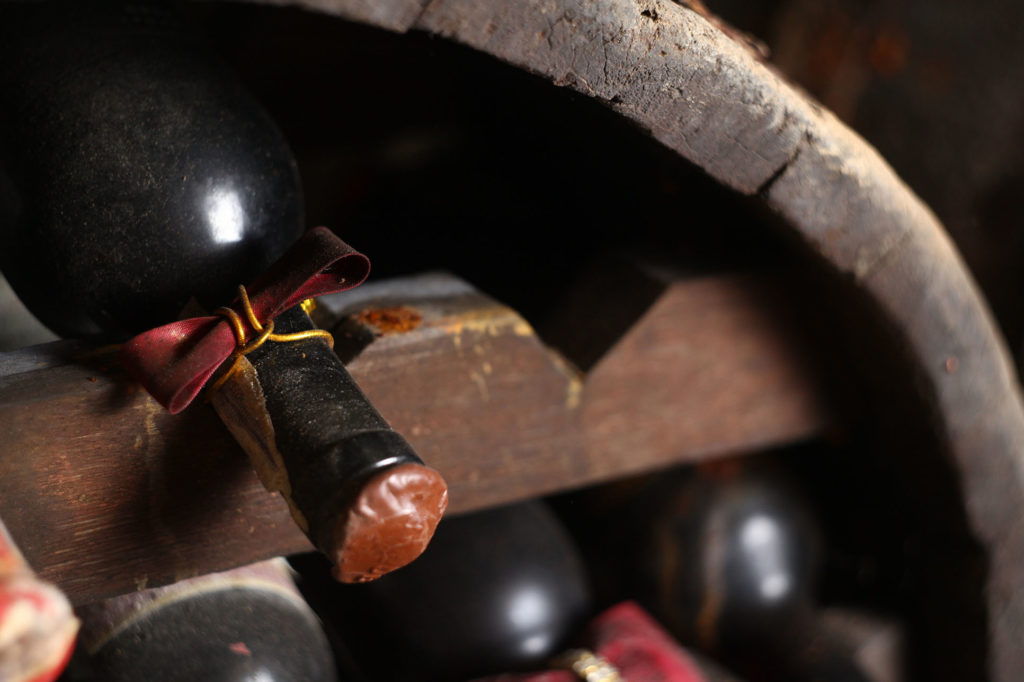In recent years, I have researched the history of the legendary sweet Constantia wine quite extensively, and a highlight has been discovering which kings, queens, poets and presidents drank it over the centuries – from Napoleon, who requested ‘a glass of Vin de Constance’ on his deathbed in 1821; to Louis XVI and Marie Antoinette, who, in 1782, had more ‘Vin du Cap de Constance’ than Burgundy in their cellar at Versailles. After learning that Frederick the Great of Prussia’s cellar contained 409 bottles of ‘Capp Constancia’ in October 1777, my focus shifted to Germany – and there I unearthed an even more surprising nugget of Cape wine history. Turns out, it was not the world-famous Constantia that soothed the cancer-ravaged throat of Frederick III in 1888, but a different Cape wine altogether, a wine that his surgeon found ‘difficult to procure’, a wine known rather quaintly as ‘Oom Koos Mosterdpotjie wyn’. At first, all I had to go on was a battered little book titled Wines of the Cape (1955), written by C de Bosdari. It mentioned a certain Koos Hugo – ‘known throughout the countryside around Worcester as Uncle Koos Mustard-Pot’ – the producer of a wine ‘generous in flavour and bouquet’, ‘the only wine that the Emperor would touch during his last illness’. Then I came across Lawrence G Green’s A Taste of South-Easter (1971), in which he claimed Oom Koos Mosterdpotjie wyn was ‘even better than the sweet Constantia that once gained world fame’. ‘Mosterdpotjie’, he revealed, was the nickname of Jacobus Francois Hugo, who was extremely fond of mustard (and also so short that he needed to stand on a rock in order to mount his horse). Some of his wine was transported over to Europe during the great Franco–Prussian War (1870–1871) and given to the wounded by Dr Louis Esselen, who had joined the German ambulance corps. Crown Prince Frederik had the pleasure of sampling it while visiting the troops, and regularly ordered more. Esselen just happens to have been the grandfather of the renowned poet C Louis Leipoldt – who recalled accompanying his oupa to the Hugo family’s farm, Wilgevlei, to purchase a half-aum (61l) of the wine. He described the blend of Sémillon and Muscadel as ‘clean, sparkling, delicious, magnificently harmonious, not too sweet, grandly individual’.
It seems Koos Hugo (1816–1894) was ahead of his time: harvesting the vineyard in several passes; removing all the rotten berries; pressing the grapes before dawn, while still cool. As well as being enjoyed by Frederick III and his chancellor, Otto von Bismarck, the wine received a bronze medal at the 1878 Exposition Universelle in Paris, where it competed against the best in the world. What I now needed to know was whether the farm Wilgevlei still existed, and whether there were still any Hugos farming there… The answer: a resounding yes! Wilgevlei is situated on the R43 between Worcester and Wolseley, next door to Botha Wine Cellar, and sixth-generation Viljoen Hugo still farms there. His brother, Pieter, who has more than 40 years’ experience in the wine industry, currently serves on the boards of directors at both Botha Wine Cellar and Slanghoek Winery. ‘Oom Koos’s old cellar is still standing,’ reveals Pieter. ‘Sadly, there’s no wine left, but when I was studying at Stellenbosch University, I tasted a bottle of it with my professor. By then, the wine was dark and syrupy – almost like moskonfyt – and we couldn’t really make out what it had been like, other than sweet and full-bodied. An exceptional wine.’ As De Bosdari wrote, six decades ago, ‘A man’s wine lives after him, bottled, corked and sealed in other men’s memories.’
Joanne Gibson is the associate editor of Rossouw’s by Diners Club South African Restaurant Guide. For more information, visit rossouwsrestaurants.com.
Photography: istockphoto

